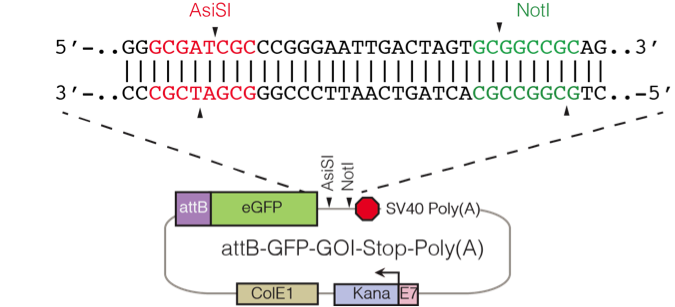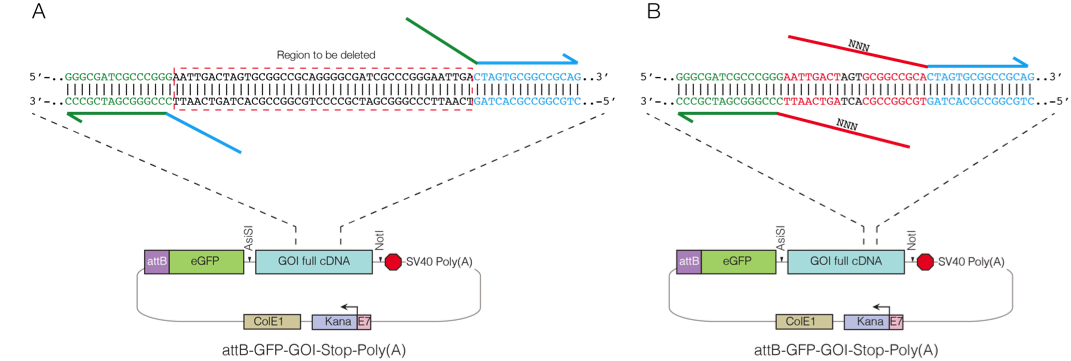cDNA cloning guide
Cut and Paste Cloning: cDNAs into attB-GFP/mCh-Poly(A) VectorIn order to investigate specific mutations and domain deletions at endogenous levels, the MIN-tag strategy can be applied to replace the expression of an endogenous gene with any desired cDNA, while maintinaing physiological expression levels. To accomplish this, we designed our knockout cassettes to include inframe AsiSI and NotI restriction enzyme recognition sites directly following either GFP and mCherry. These sites can be exploited to open the knockout cassette backbone and ligate in the appropriate cDNA with AsiSI NotI overhangs. The following MINtoolbox plasmids can be used for creating fluorescent cDNA fusions: attB-GFP-Poly(A), attB-GFP-Poly(A)-NeoR, attB-mCh-Poly(A), attB-mCh-Poly(A)-NeoR, attB-mCh-Poly(A)-PuroR
Once a cDNA is cloned into one of these backbones, it can be used to further simply generate cDNA cassettes harboring
domain deletions or point mutations using a simple circular amplification strategy
Detailed instructions and protocols can be found HERE |

|
Generating Deletions and Point Mutations in cDNA CassettesIn order to investigate protein function, point mutations and domain deletions of a protein of interest are often required. As the MIN strategy allows the replacement of an endogenous gene with a cDNA, here we offer a strategy for rapidly generating a library of deletion constructs and point-mutants without the need for subcloning. Once a wild-type attB-GFP/mCherry-GOI-Poly(A) construct is generated, a circular amplification strategy with primer overhang can be performed to modify the cDNA construct as desired. For more information see Mulholland et al. 2015 Detailed instructions and protocols can be found HERE |

|